Iphiclides podalirius (Scarce Swallowtail) which belongs to the family Papilionidae, is a fairly common butterfly although the number of specimens is declining due to deforestation and removal of wild hedges and bushes.
It is found on Prunus spinosa and all plants in the Prunus family.
Larvae are laid on Crataegus monogyna, Malus domestica, Pyrus communis and Sorbus aucuparia.
The genus Iphiclides includes three species of butterflies :
- feisthamelii
- podalirinus
- podalirius
They are found in Spain, Italy, southern France and the Mediterranean in general. The butterfly in the following photos has the back of its wings damaged probably by a predator.
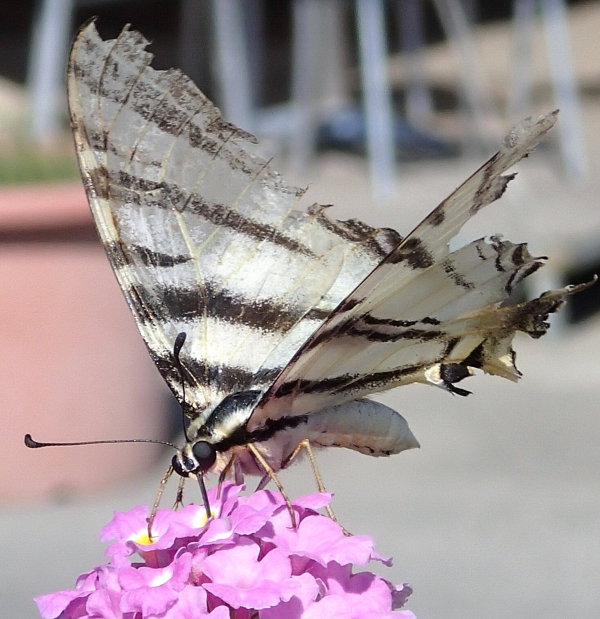
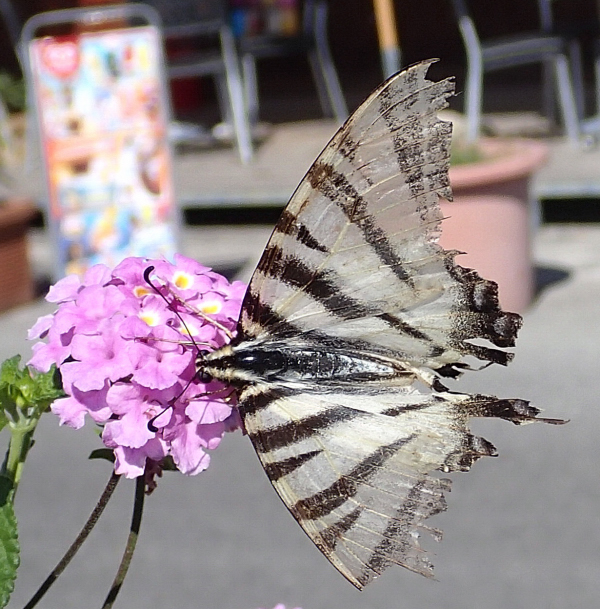
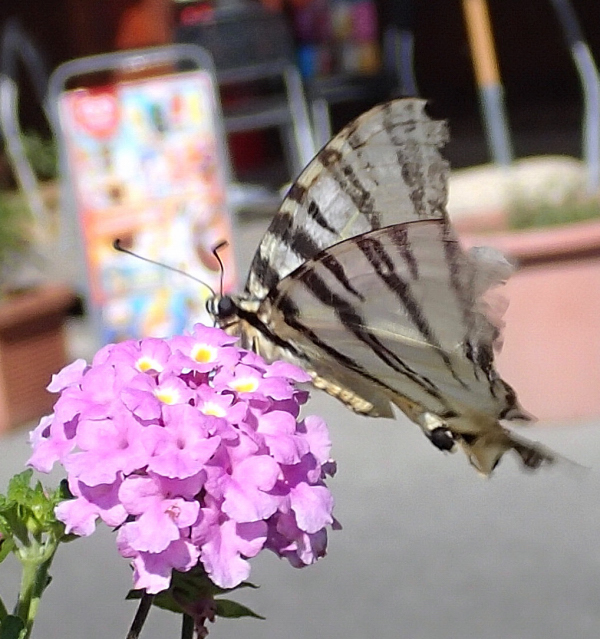
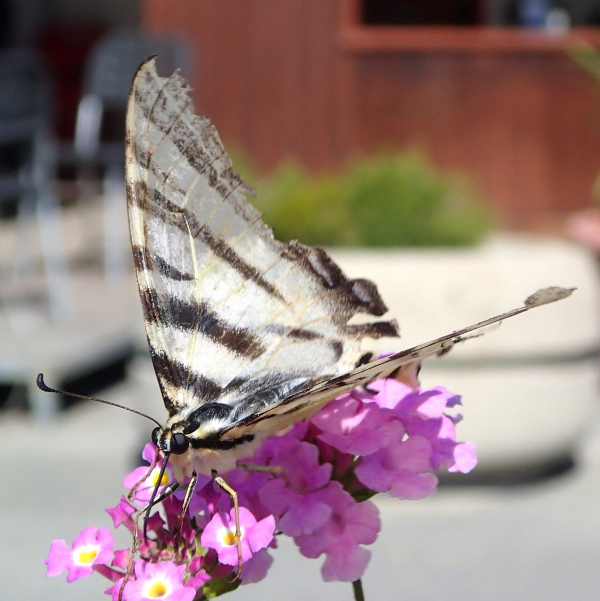
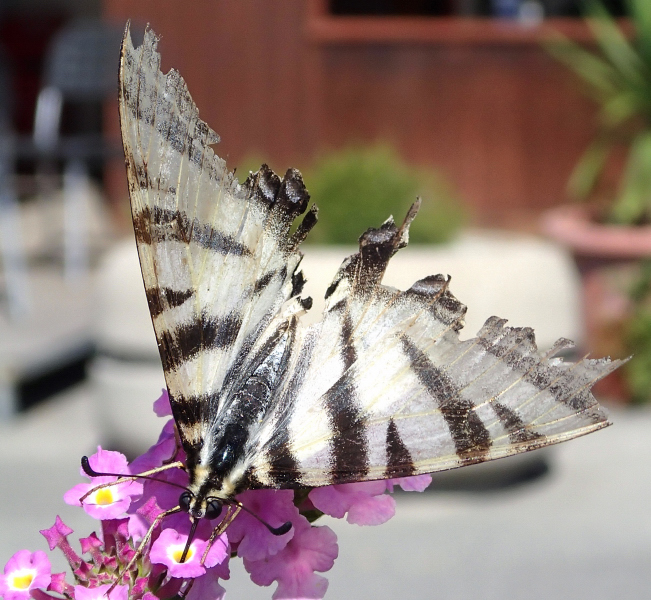
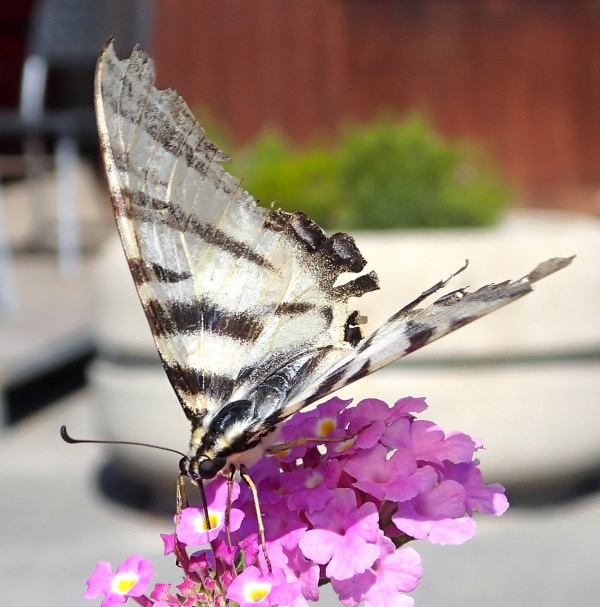
Distribution. The Scarce Swallowtail is predominantly found in Europe, particularly from Southern to Central Europe. Its presence is often linked to temperate zones and, in some instances, mountainous areas.

Morphology. This butterfly features pale yellow wings with black stripes and an elegant sickle-shaped tail on the hindwings, setting it apart from other species.
Life Cycle. The Scarce Swallowtail undergoes a complete metamorphosis, starting as an egg, progressing to the caterpillar phase, then to chrysalis, and finally emerging as an adult butterfly. The host plant for the caterpillar is often the blackthorn or similar plants.
Dietary Habits. Caterpillars predominantly feed on plants like the blackthorn and hawthorn. Adult butterflies seek nectar from a variety of flowers, including the buddleia and other wildflowers.
Conservation Status. The Scarce Swallowtail is at risk in many areas due to habitat loss, intensive farming, and climate change. Protecting its natural habitats is crucial to ensure the species' survival.
References_____________________________________________________________________
Mackintosh A, Laetsch DR, Baril T, Ebdon S, Jay P, Vila R, Hayward A, Lohse K. The genome sequence of the scarce swallowtail, Iphiclides podalirius. G3 (Bethesda). 2022 Aug 25;12(9):jkac193. doi: 10.1093/g3journal/jkac193. PMID: 35929795; PMCID: PMC9434224.
Abstract. The scarce swallowtail, Iphiclides podalirius (Linnaeus, 1758), is a species of butterfly in the family Papilionidae. Here, we present a chromosome-level genome assembly for Iphiclides podalirius as well as gene and transposable element annotations. We investigate how the density of genomic features differs between the 30 Iphiclides podalirius chromosomes. We find that shorter chromosomes have higher heterozygosity at four-fold-degenerate sites and a greater density of transposable elements. While the first result is an expected consequence of differences in recombination rate, the second suggests a counter-intuitive relationship between recombination and transposable element evolution. This high-quality genome assembly, the first for any species in the tribe Leptocircini, will be a valuable resource for population genomics in the genus Iphiclides and comparative genomics more generally. © The Author(s) 2022. Published by Oxford University Press on behalf of Genetics Society of America.
![]() Iphiclides podalirius
Iphiclides podalirius 







